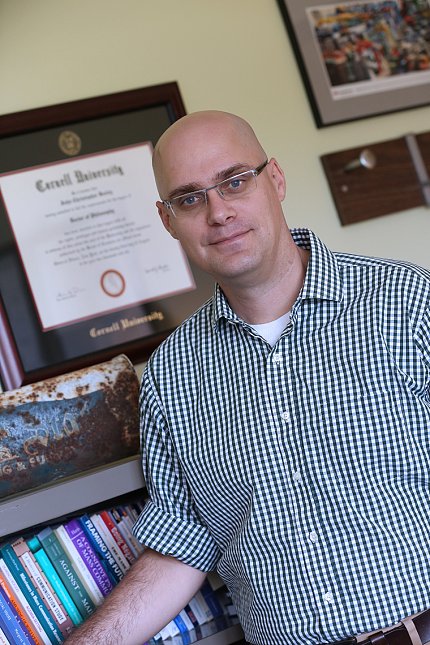Clear Goals, Objectives Key to Effective Science Communication

Photo: Michigan State University
There’s more to communicating scientific information to the public than translating complex information into plain language. Scientists must also think about what goals and objectives they want to achieve when they communicate, said Dr. John Besley during a recent OBSSR Director’s Webinar.
“Science communication isn’t science education,” explained Besley, Ellis N. Brandt professor of public relations at Michigan State University.
Most scientists are open to communicating with the public about their research. Besley’s research has found that scientists often have short-term objectives when they communicate their work. For instance, they want to get people interested in their material or they want to teach their subject matter to the public.
However, Besley has found it difficult to get scientists to specify what else they would like to gain over the long-term from the time and effort they put into communication. Do they, for instance, want to change individual behaviors, such as getting people to drink less, quit smoking and exercise more? Or do they want to build public support?
Interestingly, Besley’s research has shown that scientists—when pushed—will say what they hope to achieve when they discuss their work. For example, they say they communicate to encourage policy makers to use scientific evidence, influence individuals’ behavior and inspire students to pursue a scientific career.
When scientists are trained in science communication, they often receive instruction about tactics such as speaking more clearly, avoiding jargon, fostering dialogue or telling stories. Scientists “are super willing” to prioritize different tactics, he said. Most are not willing to use negative tactics like purposefully making people angry. Tactics, however, are effective only “if they help you achieve your goals and objectives.”
According to Besley, “Objectives are the ingredients of communication.” Examples of objectives are trust-related beliefs about competence, integrity, motivation, openness and shared identity. Other objectives include beliefs about risks and benefits, social norms and self-efficacy. Affecting how others frame and feel about issues is also sometimes important. These are the building blocks scientists can use to meet their big-picture goals.

Photo: Michigan State University
“If we’re doing strategy, we start with our goals. Then, we figure out which objectives let us achieve those goals. Finally, we pick tactics that let us achieve those objectives,” he said.
Many scientist-communicators aren’t aware of the need for clear objectives or rely on the most obvious ones such as knowledge and interest. Besley said they are willing to consider a broader range of objectives when they believe they will be effective and ethical. Clear objectives also allow researchers to evaluate why some tactics work in certain contexts and others don’t.
Once scientists prioritize objectives, they seem to be able to have better conversations about what to prioritize when communicating. For example, if a scientist has only an hour to speak to a group, he or she can think about tactics that will increase the odds the talk is successful. Researchers who wish to be perceived as being open to new ideas can come early or stay late, plan time for discussion and participate in question-and-answer sessions.
“Good communication is hard,” Besley concluded. It requires scientists to devote time and resources to the effort. “If we want to do it effectively, we need to pay for it.”
